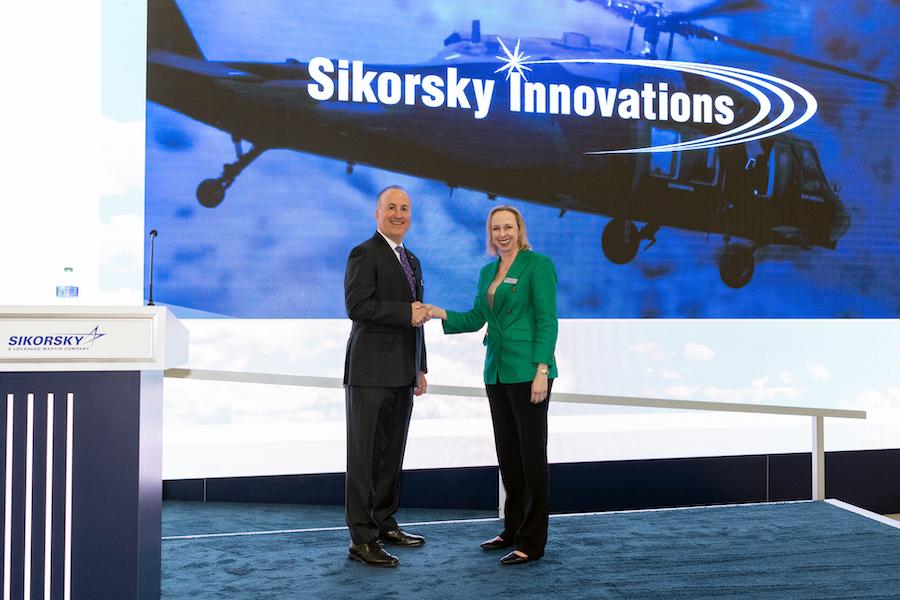
Sikorsky President Paul Lemmo (left) and Amy Gowder, President and CEO of Defense & Systems at GE Aerospace, announce the hybrid-electric demonstrator at Heli-Expo 2023.
Credit: Sikorsky/Lockheed Martin
ATLANTA—Sikorsky and GE Aerospace have revealed plans to develop a fully autonomous hybrid-electric vertical-take-off-and-landing (VTOL) demonstrator aimed at proving technology for a family of large multi-role, civil and military advanced air mobility vehicles. Targeting ranges in excess of 500 nm...
Subscription Required
This content requires a subscription to one of the Aviation Week Intelligence Network (AWIN) bundles.
Schedule a demo today to find out how you can access this content and similar content related to your area of the global aviation industry.
Already an AWIN subscriber? Login
Did you know? Aviation Week has won top honors multiple times in the Jesse H. Neal National Business Journalism Awards, the business-to-business media equivalent of the Pulitzer Prizes.
